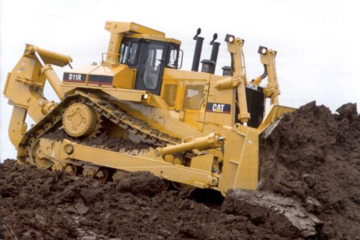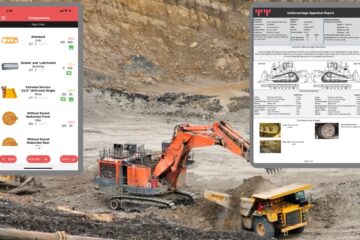Undercarriage systems are made up of multiple components. Each component has its own distinct life span. The challenge is to ensure the entire set of components achieves the greatest possible life, (The “Target Life”), for the system as a whole. This will depend on the weakest component. The individual components cannot be replaced individually when they are showing signs of wear as new components will simply wear down quicker. Corrective actions and repairs should be done to components if they look like they will not achieve their target life. Setting a target life for the undercarriage in a particular working environment means you have a benchmark to work to. It provides a target cost per hour to be used for budgeting. The responsibility of the Condition Monitoring or Reliability team is to monitor the undercarriage through inspections and identify corrective actions that will need to be taken so as to achieve the target hours for the entire system.
Note: “You can only manage what you can measure”
TrackTreads provide a complete Undercarriage Management System and Inspection Tools to collect field data, then manage the undercarriage through its entire life. Don’t hesitate to start today.
Points to consider when planning to achieve that Target Undercarriage Life
- Proper Tension – too much tension wears out the track quicker, uses more fuel and stresses the power train. Too much slack can cause the track to come off.
- Turn the Pins & bushes – turning the pins and bushes ensures that the full 360 degrees of the bush is utilized instead of just 180 degrees. This needs to be balanced against the cost of performing this task.
- Keep it Clean – build-up of material around the rollers and other components causes excess grinding wear which increases wear rates. Regular cleaning will help and be on the lookout for large rocks stuck in the undercarriage.
- Look for leaks – check for oil leaks in rollers and the cannon cylinder. Any leaks will lead to excessive wear and early failure of components.
- Dry Joints – watch for noisy chains which may indicate some dry joints. A temperature measurement will quickly indicate the dry joints which should be attended to in order to avoid excessive wear and early failure
- Look for loose or missing Hardware – operators and inspectors should check regularly for loose or missing hardware and bolts which can also lead to increased maintenance down the track
- Idler Strength– idlers are built to take loading, therefore when operating excavators, the digging should be done over the front idlers. Avoid excessive digging over the side or over the sprocket side of the machine
- Move Forward – undercarriage is designed to move forward. Reversing, especially at speed, tends to increase wear on the sprockets and bushes. Try to concentrate on moving mostly forward and avoid any loading when reversing e.g. back-blading (build-up of material behind the blade as the machine reverses)
- Make sure the shoe Fits – shoes should be chosen to provide just sufficient flotation for the machine in the material it is working in, no more, otherwise there will be bending and cracking of the shoes. Any bending can cause the front edge of one shoe to engage incorrectly with the next shoe in line thus causing damage.
- Purchasing cheap will end up costing more later on – The undercarriage fitted needs to match the job it is expected to do, and initial cheap purchase price might lead to less life and the overall cost over the life of the undercarriage might in fact be more when the undercarriage is replaced due to reduced life. Everything comes at a cost!
To get further information and arrange a free demonstration simply fill in the form below.
[contact-form-7 id=”2772″]



